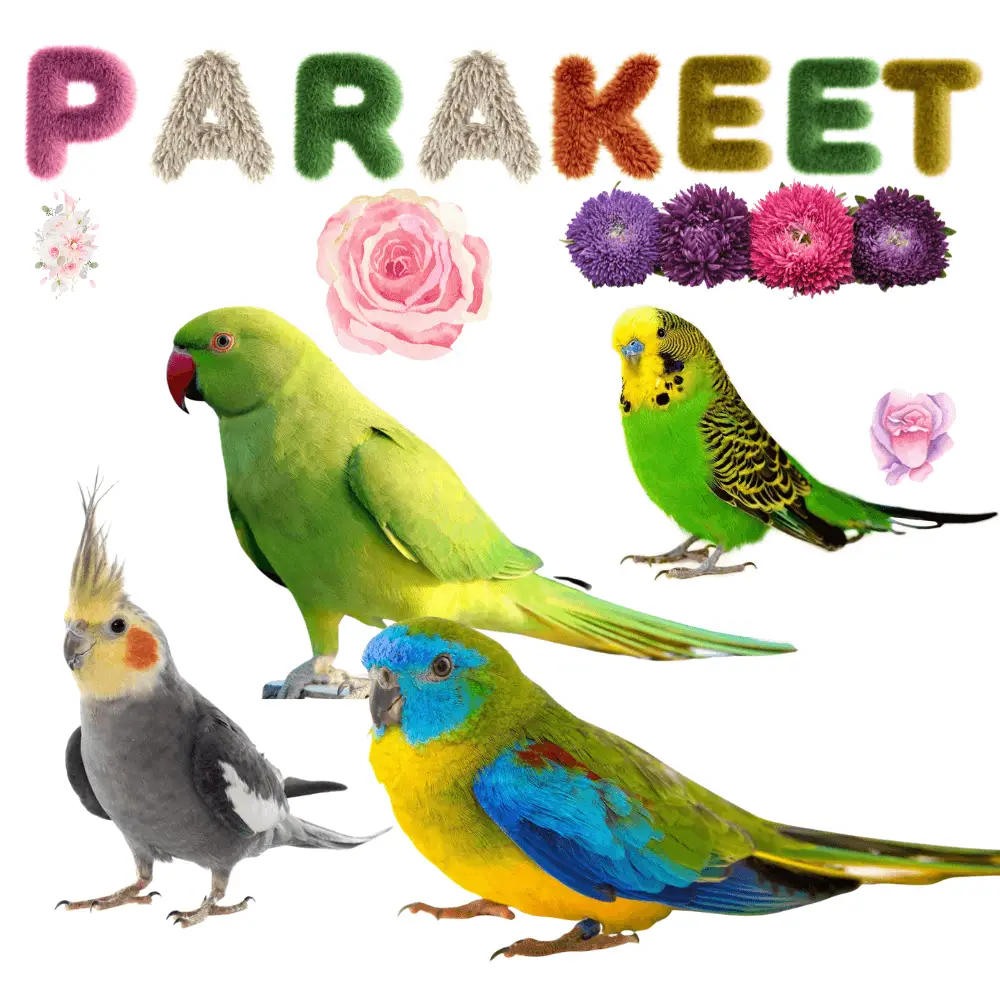Adopting a parakeet is a good idea! But how do you choose a parakeet that’s right for you? What is the behavior of this parakeet? Which cage is ideal for this species of a parakeet? Does she make a lot of noise?
Is she affectionate with her master? Is this species recommended for beginners? If you are about to choose your pet parakeet, these are probably the kinds of questions you are asking yourself.
Generally, it is the appearance of the bird, its character, and the requirements in terms of its living conditions that determine our choice between this or that species.
Parakeet type
This small selection, prepared for the Week of the Parakeet on Anipassion, will introduce you to 5 parakeets, excellent pet birds, all easy to breed and recommended for beginners.
To go further and learn more about each of these 5 species, technical sheet details are available on our website.
Budgerigar
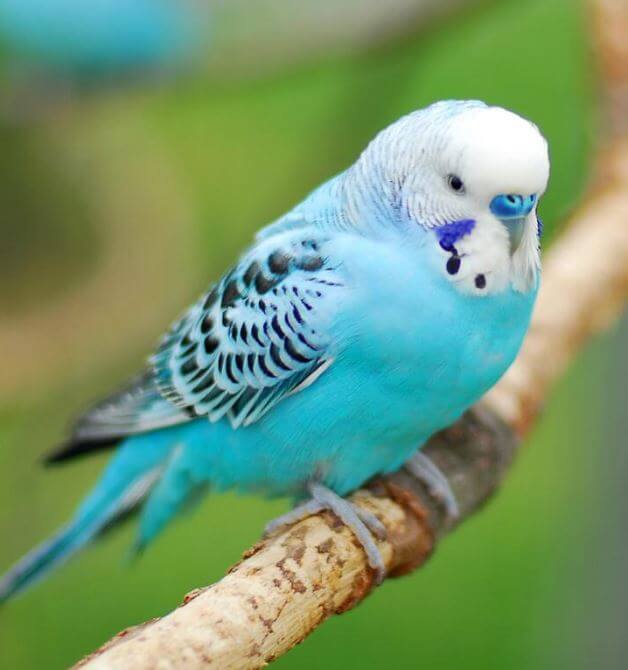
Scientific name: Melopsittacus undulatus
The Budgerigar is a cheerful, playful, energetic, intelligent, and very curious pet bird. She likes the company of humans and tames herself very well.
Very sociable, this bird does not tolerate loneliness very well and needs constant interaction.
If you cannot devote a lot of your time to it, it is essential to offer it a companion, or even adopt several individuals of the same species.
The budgerigar can imitate a very wide range of sounds and is therefore a talking bird that can learn whole sentences.
This species is neither destructive nor aggressive, nevertheless, it remains a territorial bird, and cohabitation with other species can sometimes become complicated.
Parakeet budgie lifespan
A well-fed and maintained budgerigar in good condition generally live at least 7 – 10 years, some can reach the age of 15 and even more.
Budgie bird care
The budgerigar can live in a large cage or in the outdoor aviary and evolves very well in semi-freedom.
An ideal cage for a budgerigar: 70 – 90 cm long minimum, for a single budgie or a couple. As with all birds, be very careful of drafts and make sure your parakeet has a shelter to protect it from the sun and a warm space to withstand low temperatures.
Budgie breeding
The budgerigar is the most popular pet parakeet in the world. It is highly recommended for beginners and appreciated by children. As this parakeet is quite solid and not very aggressive, it can live even with small children.
Elegant bird
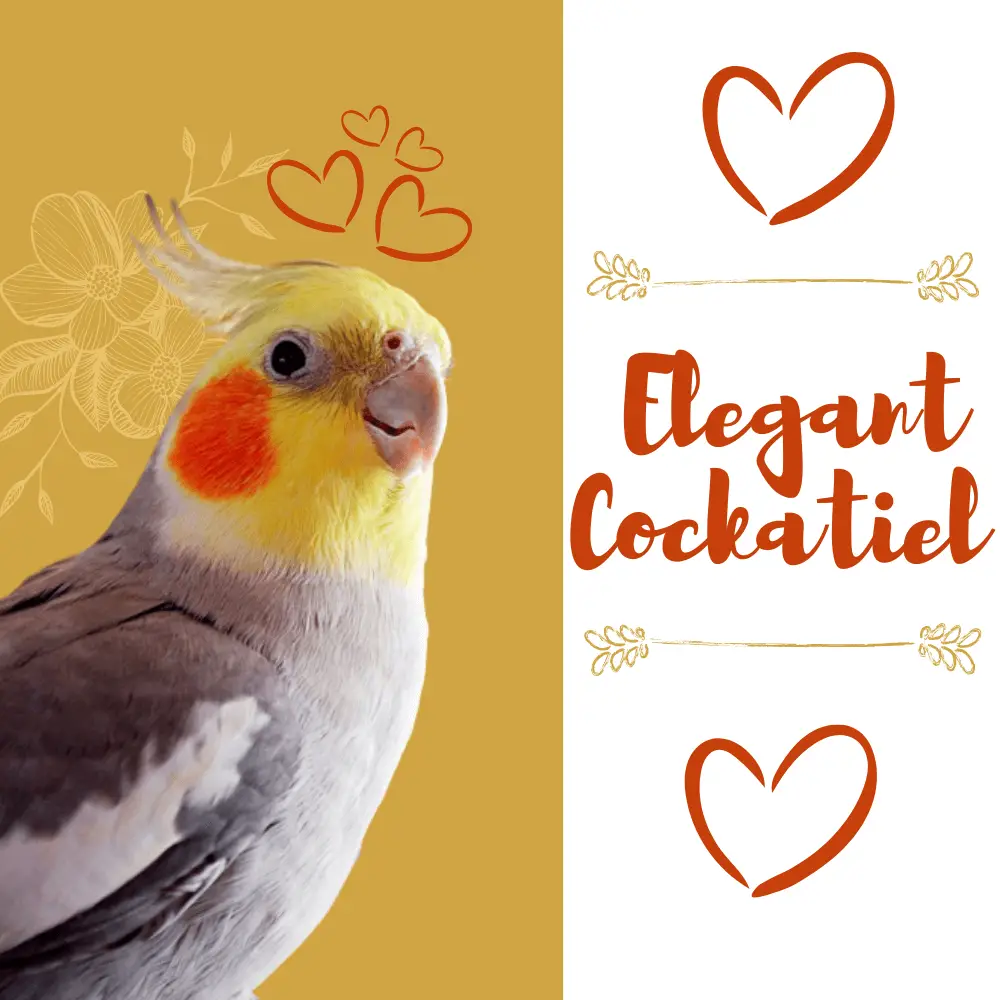
Scientific name: Neophema elegans
The elegant cockatiel is a calm bird, almost silent and affectionate with its master. Confident, easy to tame (although a little shy by nature), and also very playful, they are a very pleasant companion parakeet that the whole family will greatly appreciate. it is also recommended for beginner hobbyists.
Life expectancy
The lifespan of this species varies from 10 to 15 years.
Care
An ideal aviary for an elegant cockatiel: 2 to 3 m long, 1 m wide, and 2 m high. Adult parakeets of this species can live in an outdoor aviary. Its habitat should be well protected from moisture and equipped with fresh branches.
In the case of adopting several elegant parakeets, you must obtain a larger aviary to ensure them a large living space.
SOURCE: African Grey Parrot Pet
Turquoise Parakeet

Scientific name: Neophema pulchella
Turquoise parakeets are birds with soft songs, quite calm, not very shy, and pleasant to live with. They are not particularly affectionate but very tolerant and intelligent.
it generally cohabits well with other birds that do not belong to the Psittacidae family. it is highly recommended for beginner breeders, breeding is quite easy.
Life expectancy
It lives on average 12 years, but under favorable living conditions, these birds can live much longer, up to 18 years.
Living conditions
An ideal habitat for a turquoise parakeet would be a cage or aviary 2-3m long, 1m wide, and 2m high. For life outdoors, shelter from the cold and humidity is absolutely essential.
Bourke’s Parakeet
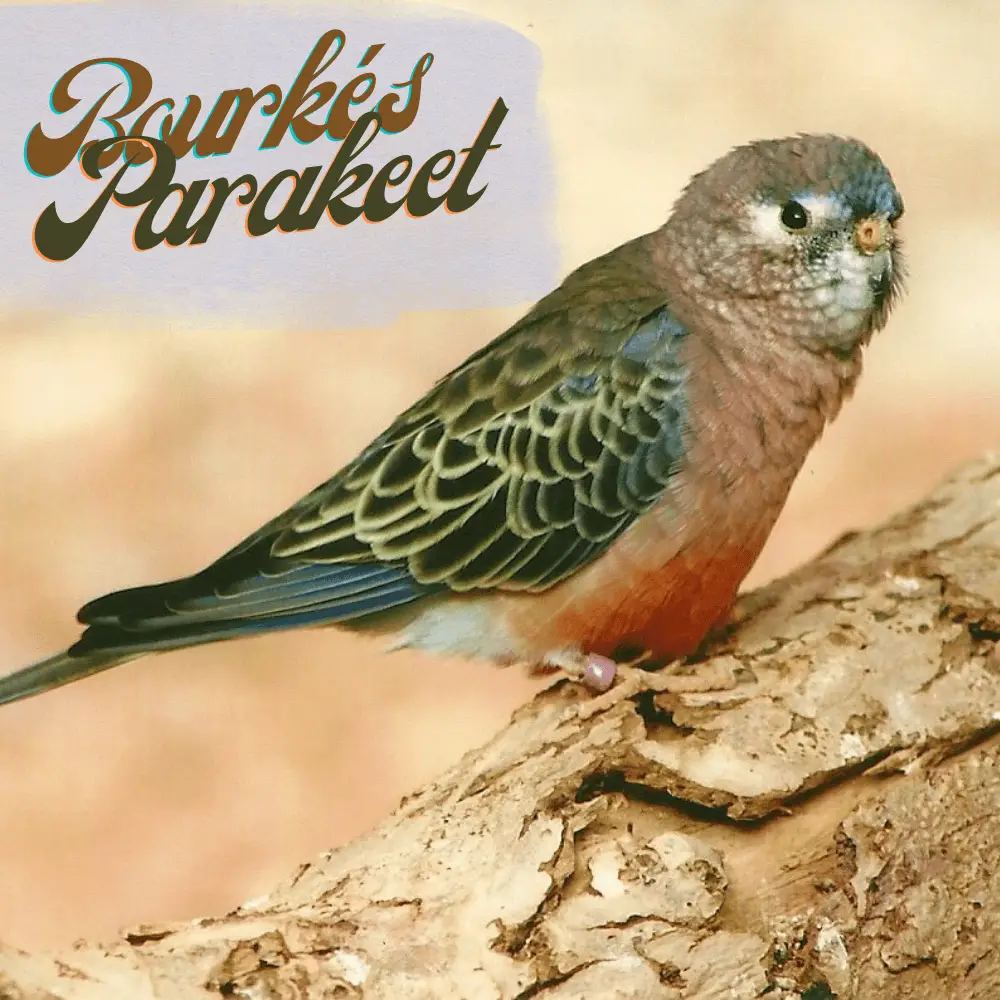
Scientific name: Neopsephotus burkii
It is a parakeet known for its exceptional calm. Fearless, easy to tame, and very sociable, this bird will keep you company while remaining discreet.
they are non-biting and non-destructive. With their very soft song, they do not make noise either and are perfect companions for those looking for a calm and silent bird.
In addition, they get along very well with other species and can coexist in the same aviary with practically all the birds, even with callosities.
Bourke parakeet lifespan
it’s live an average of 9 – 12 years, sometimes up to 15 years.
Bourke Parakeet care
An ideal cage for this parrot: is 1 m long, 1 m wide, and 1 m high. Nevertheless, for a perfectly adapted habitat, opt instead for an outdoor aviary of 2 to 3 m in length, 1 m in width, and 2 m in height.
This aviary should be covered and heated in cold weather, as well as well equipped with cool wooden perches. it’s very suitable for beginner breeders, even as a first bird.
Ring-necked parakeet
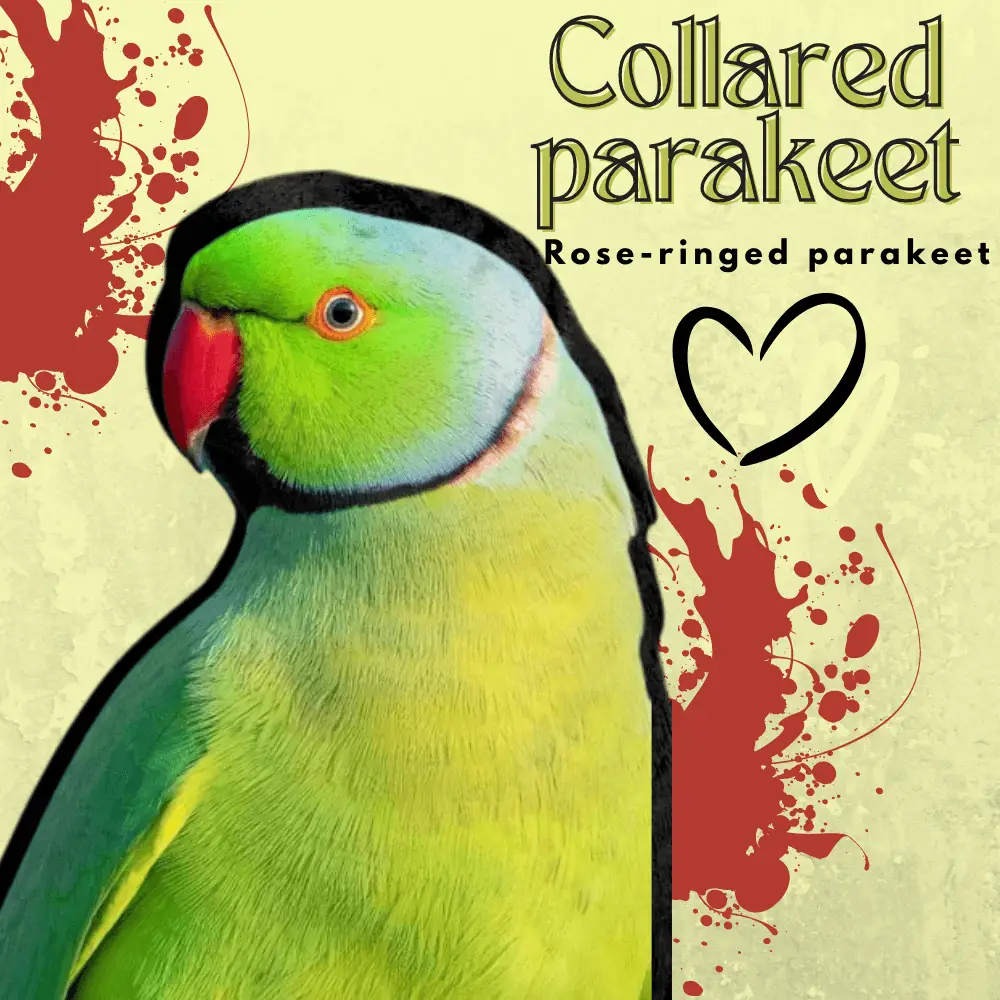
Scientific name: Psittacula krameri
Proper socialization and hand-rearing are essential for the Rose-ringed Parakeet to become a good companion bird.
Likewise, you must maintain daily interactions with your bird throughout its life so that it remains sociable and affectionate.
The Rose-ringed parrot imitates various sounds and sometimes melodies, but it is not a talking bird. If the quietness of the bird is an important criterion for you, it is important to know that the rose-ringed parakeet can be quite noisy.
Ring-necked parakeet lifespan
A ring-necked parrot typically lives 10 to 15 years.
Ring-necked parakeet care
This parrot needs a larger cage than the species described above. A cage 1 m long, 60 cm wide and 160 cm high may be suitable,
but only on condition that the bird spends at least 8 hours outside its cage. Otherwise, plan an indoor or outdoor aviary with minimum dimensions of 2 mx 2 m x 2 m.
Ring-necked parakeet breeding
The Indian ringneck is easier to keep in an outdoor aviary without trying to make it a companion bird.
Nevertheless, hand-rearing (EAM) or manipulation in the nest (MAN) is possible, which allows this parrot to become an excellent companion for its master. If this is not your first bird, you can give it a try.
Parakeet Diseases
Most parakeet species are quite hardy and have few health concerns, as long as they are cared for properly.
You just need to keep them away from drafts and pathogens such as bacteria, parasites, and fungi. This requires impeccable hygiene and therefore regular cleaning of the cage (or aviary) and all of its accessories.
Note however that the angel wing syndrome can occur in the budgerigar because of an unsuitable diet. Chlamydiosis is also one of the diseases that can be observed in the Rose-ringed Parakeet.
Parakeet lifespan
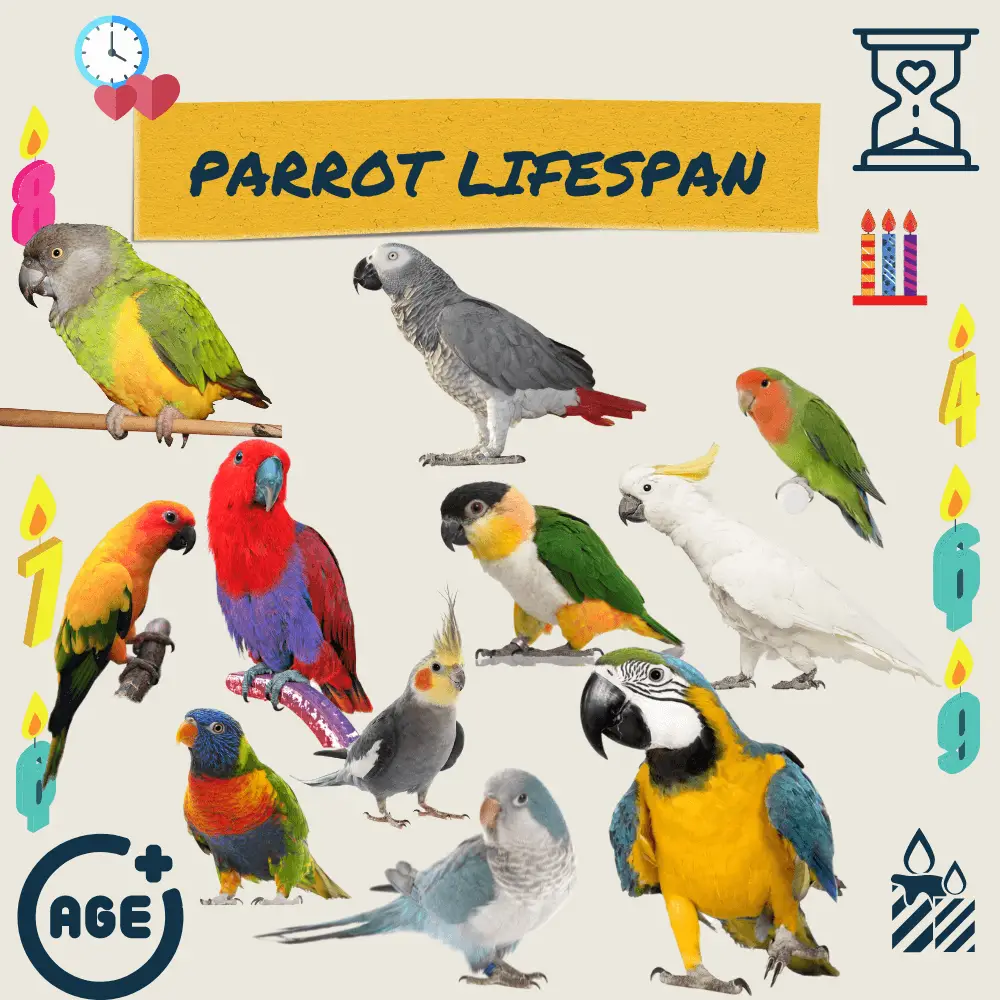
Depending on the species, the life expectancy of a parakeet can range from simple to double.
The shortest lifespan is that of the budgerigar. It can live 12 years on average. That of Catherine is not very far from it: 15 years. In the ring-necked, it can be up to 30 years old.
Whatever the species, the parakeet is called to accompany you for a long time. The acquisition of such a bird must therefore come from a well-considered decision.
Moreover, the higher the quality of care, food, and environment provided to the parakeet, the better and longer it will live.

